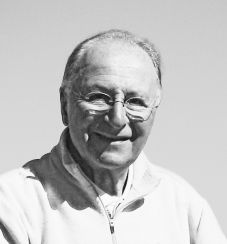But not everyone in the fractured computer networking community was convinced of TCP/IP’s viability.

CERN programmer Ben Segal, however, was convinced that TCP/IP was the key to solving computer-to-computer communication problems. Between 1984 and 1989, Segal encouraged CERN, one of the world’s largest and most influential research centers, to accept TCP/IP so that the research center’s own disparate computer Ben Segal, opulation could all communicate.
Segal also introduced the TCP/IP protocols to fellow CERN researcher Tim Berners-Lee, who used them as a foundation on which to invent the World Wide Web.
A science whiz
Segal’s personal history is as tangled as the Internet’s. Two years after he was born in 1937 in Tel Aviv, Israel, his ophthalmologist mother left his general practitioner father to return to her parents’ home in Manchester, England during World War II, where he was raised largely by his grandparents.
A science whiz in school and out, Segal built a TV from a kit, spent hours taking apart his bicycle and reassembling it, and gave a seminar on Einstein’s special relativity to his final year high schoolclassmates.
Fortunately, the English school system emphasized early specialization, so Segal was able to indulge his love of science through his early school years. At London’s Imperial College, Segal studied mathematics and physics. After receiving his bachelor’s degree in 1958, he got a job at Britain’s Atomic Energy Authority working on fast breeder nuclear reactors, which seemed full of promisefor nuclear power plants around the world.
In April 1962, Segal moved to the U.S. when he was hired by Detroit Edison. Four years later, Segal migrated further west to Stanford University to get his Ph.D. in nuclear engineering, but ended up writing his thesis on aerodynamics. In between, he discovered and fell in love with computing.
Segal would sometimes go down the hill from the Ryan reactor lab to Stanford’s computer center for midnight computer time. Unknown to Segal, Vint Cerf had just graduated from Stanford with his own mathematics degree before moving on to UCLA for his Ph.D. After Segal graduated, Cerf would return to Stanford where, with Bob Kahn, he created TCP/IP.
Segal, CERN and Cerf
After graduating from Stanford in 1971, Segal found himself overqualified for most just-out-of-college jobs. But two Stanford friends had gotten jobs at a mysterious place called CERN in Geneva, Switzerland. Even though he had deeper backgrounds in both nuclear engineering and physics, Segal sold himself to CERN as a computer systems programmer.
For his first years at CERN, Segal learned the trade of the fragmented computer communications environment. He then spent 1978-1983 on Stella, a project to interconnect six European labs via satellite.
Segal’s and Cerf’s jagged paths finally met in 1978 at a summer workshop on interconnecting computer networks held in a French chateau in Gascony. Segal learned all about TCP/IP directly from its author, who was a lecturer.
Though Stella developed its own Internet protocols designed by Italian colleagues, Segal kept TCP/IP in mind when the project was completed in 1983 – the same year ARPAnet adopted TCP/IP.
Segal fervently believed TCP/IP was the best all-encompassing solution for CERN’s computer communication Tower of Babel. For the next five years, Segal worked with a few colleagues on implementing TCP/IP around CERN’s campus as an under-the-radar project.
Segal and Berners-Lee
Elsewhere on the CERN campus, Tim Berners-Lee was working on an independent system to interconnect the minicomputers and embedded computer systems used by the research center’s multiple experiments and control systems, using a principle called Remote Procedure Call or RPC. Early on, he contacted Segal, who had some RPC experience.
Segal heard his new comrade also had a “private” project to extend hypertext links outside a single computer and across networks. Segal encouraged Berners-Lee to make TCP/IP the principal network.
Berners-Lee’s boss, Mike Sendall, allowed him to work on his hypertext project in his spare time, and in early 1989 helped him present a proposal to CERN management for what would become the World Wide Web. When the project was finally approved in 1990, Segal helped persuade Sendall to purchase two NexT computers for Berners-Lee, machines not easily available at CERN but which would speed up his prototyping work. As a result, Berners-Lee’s full system was completed in only three months, and was ready by Christmas 1990.
CERN’s main Network Group finally went public with TCP/IP in 1989, taking full responsibility for its coordination and support. From there, it didn’t take long for the World Wide Web to become a truly global phenomenon, thanks to its being built on TCP/IP, championed by Segal at several critical developmental moments.
Segal is now semi-retired but still maintains an office at CERN. As an active member of the Internet Society he helped to organize the Geneva Chapter, the INET98 Training Workshop, and served a three-year term on its Board of Trustees. His wife, Christiane, is a sculptor, and he has two sons: Adam, an ex-RAF Harrier pilot and flying instructor, now a British Airways pilot, and Nicolas, now with HSBC Private Banking.